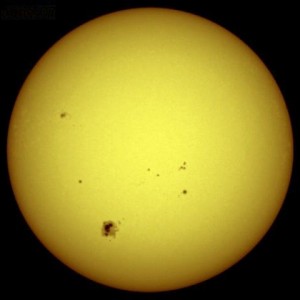Late last month a story made the rounds of national newspapers about predictions of a new Little Ice Age that would hit the world in about 15 years, based on some solar research done by scientists in the United Kingdom. One example of the story from AOL.com is available here and a longer-more detailed story at LiveScience here. The stories said that new predictions of solar activity would lead to sharply decreasing temperatures in 15 years.
Climatologists later looked at these stories and determined that the popular press had misinterpreted the results of the astronomy research and that the change in the solar cycle was unlikely to lead to catastrophic cooling. You can read an excellent two-part discussion of this topic by Dr. Ricky Rood at the Weather Underground blog here and here.
This week Astronomy Now announced that a conflict in the historical number of sunspots based on two different time series of sunspot counts has been resolved by astronomers. Here is a link to the story. The new corrected data show that the recent warming in global temperature could not have been due to increased solar activity, since the original spurious upward trend in sunspots in one of the original datasets was shown to be faulty in the new analysis.
Climatologists use paleodata like tree rings, sunspots, lake and ocean sediments and ice cores to look at climate patterns over longer time periods that the historical instrumental record of about 150 years can measure. Climate modelers use the results of paleodata analysis to test their models to see how well they can predict past climates. That gives them confidence that the models will also work well for future climates.
